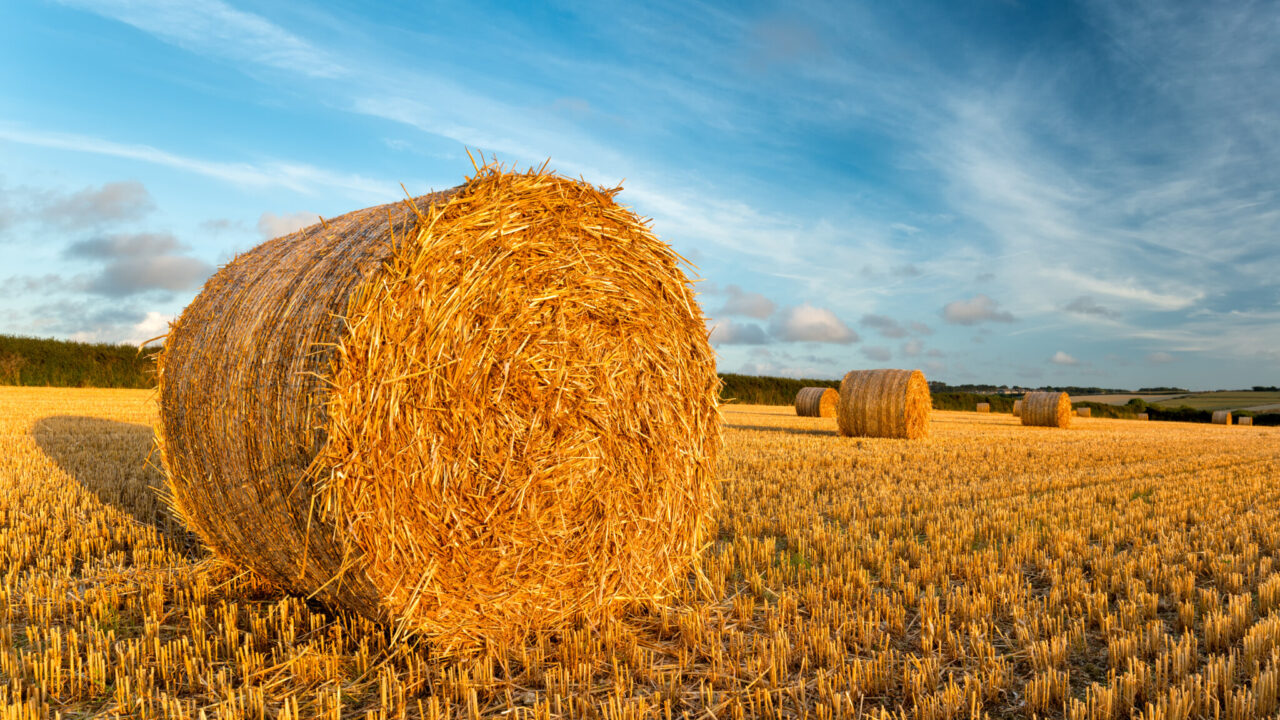Straw availability on the island of Ireland is very strong at the present time, Co. Derry merchant, Robert Miller has confirmed.
However, the merchant said: “It’s the polar opposite scenario in Britain.
“The main cereal growing areas of England have not seen rain in five months.”
The merchant highlighted the high quality of straw coming up from the Republic.
“We are already bringing up large quantities of barley straw from the main grain growing areas in Leinster and Munster.
“There’s plenty of it and the quality is excellent.”
Straw availability
It is estimated that Ireland produces about one million tonnes of cereal straw annually.
Initial projections from Teagasc indicate that winter barley crops harvested over recent days are averaging between 14 and 15 4X4 round bales/ac of straw.
This is in line with the high cereal yields achieved up to this point. Winter wheat yields are also projected to be well up year-on-year.
This holds out the promise of yet more high quality straw becoming available later in the season.
Oat straw is notoriously difficult to manage. This is due to the wide variability in maturity levels of plants within a crop.
But with all cereal crops reaching maturity at an accelerated rate, there is growing confidence that all cereal straw produced in Ireland this year will be fit for combining.
This, in turn, puts a question mark over what proportion of the 2025 crop will be finally earmarked for the Straw Incorporation Measure (SIM).
Some weeks ago, Minister for Agriculture, Food and the Fisheries Martin Heydon secured a €5 million top-up to the funding available for the programme.
One upside to the poor availability of straw in Britain is the reduced threat of importing herbicide-resistant weed seeds, including blackgrass, into Ireland.
Meanwhile, merchants such as Robert Miller point to a very strong demand for straw in Northern Ireland over the coming months – both for animal feed and bedding purposes.
And this trend looks set to continue.

Increasingly, dairy farmers include straw in the total mixed ration (TMR) they feed to both their lactating and dry cows.
Significantly, Miller believes that selling straw and hay on a per bale basis does not convey to farmer-customers the full details of what they are buying.
He said: “Straw and hay must be sold on a weight basis.
“Only then will farmers know exactly what they are really getting for their money.
“I buy straw exclusively on a weight basis. Each 8x4x3 bale is guaranteed to weigh 500kg,
“I can then sell the hay and straw to customers on the same basis.”

